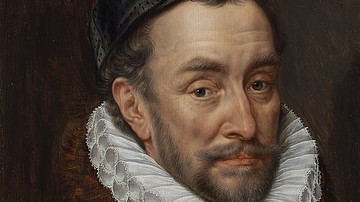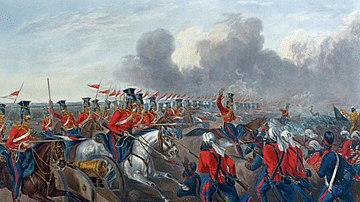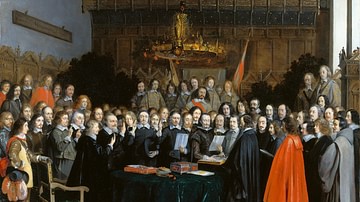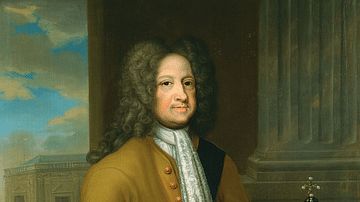Search
Search Results

Definition
Black Kettle
Black Kettle (Mo-ta-vato/Mo'ohtavetoo'o, l. c. 1803-1868) was a chief of the Southern Cheyenne who became famous as a "peace chief" – seeking peaceful relations with the US government – as opposed to war chiefs such as Roman Nose (Cheyenne...

Definition
William the Silent
William the Silent (l. 1533-1584, also known as William of Orange) was the leader of the Dutch Revolt (the Eighty Years' War) in the Netherlands; first politically (between 1559-1568) then militarily (between 1568-1584). He is among the most...

Definition
Italo-Ethiopian Wars
Italy occupied Ethiopia for five years, from 1935 to 1941, following a mass-scale invasion launched by the fascist dictator Benito Mussolini (1883-1945). However, Ethiopia had been a long-aimed colonial objective of Italy, which had already...

Definition
Anschluss
The Anschluss ('fusion') of 12 March 1938 was the annexation and formal union of Austria with Germany. Adolf Hitler (1889-1945), the Nazi leader of Germany, dreamed of an empire which enclosed all German speakers, his 'Greater Germany'. Hitler's...

Definition
First Anglo-Sikh War
The First Anglo-Sikh War (1845-6) was a short and bloody conflict won by the British East India Company (EIC) against the Sikh Empire. The EIC was keen to expand into northern India, but the Sikh army was a well-trained, well-equipped, and...

Definition
Peace of Westphalia
The Peace of Westphalia, the name given to the multiple treaties, marked the conclusion of the Thirty Years' War. Signed on 24 October 1648, it aimed to secure political autonomy for the multitude of small states that made up the Holy Roman...

Definition
Red Cloud's War
Red Cloud's War (1866-1868) was a conflict between the Lakota Sioux-Cheyenne-Arapaho alliance and the US government over the westward expansion of the United States into the Powder River territory. It was the only war won by the Plains Indians...

Definition
George I of Great Britain
George I of Great Britain (r. 1714-1727) succeeded the last of the Stuart monarchs, Queen Anne of Great Britain (r. 1702-1714) because he was Anne's nearest Protestant relative. The House of Hanover secured its position as the new ruling...

Definition
League of Nations
The League of Nations was founded in January 1920 to promote world peace and welfare. Created by the Treaty of Versailles, which formally ended the First World War (1914-18), the League provided a forum where nations promised to resolve international...

Definition
American Revolution
The American Revolution (1765-1789) was a period of political upheaval in the Thirteen Colonies of British North America. Initially a protest over parliamentary taxes, it blossomed into a rebellion and led, ultimately, to the birth of the...